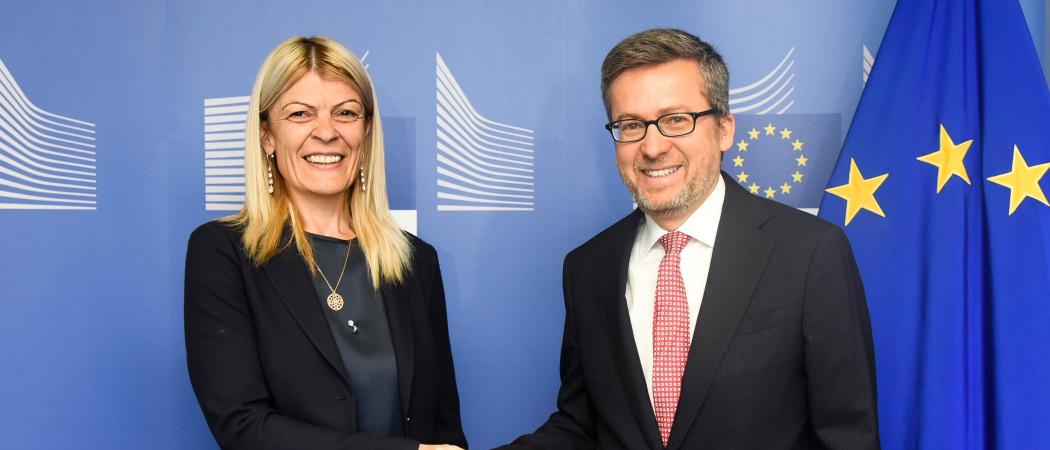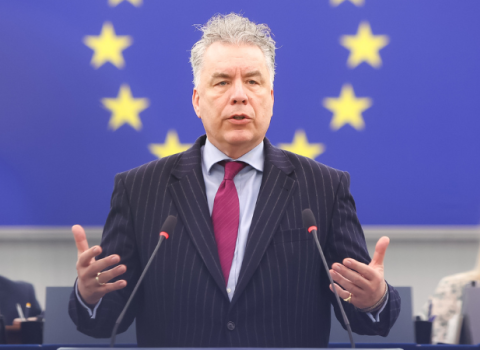A new large-scale research infrastructure will revive the scientific and technological potential of the Balkans, whilst helping its economy and bringing people together around a shared endeavour

A €200 million investment in an international research facility in the Balkans could heal the wounds left by years of ethnic conflicts, help to stop the brain drain and lead to the region regaining its former scientific glory, according to Montenegro’s science minister Sanja Damjanović.
For the past three years, she has promoted the vision of a world-leading research institute, built to the same collaborative model as CERN. Now the project has entered its design phase and is edging towards reality.
The 1991 - 2001 wars in former Yugoslavia diminished the economies and science capacity of all countries in the area. Damjanović is now looking to the political will of neighbouring countries and of the EU, “To bring back the tradition in technology that we had in the past.”
Seven countries in the Balkans and Kosovo have teamed up to establish the South East European International Institute for Sustainable Technologies (SEEIIST), which will apply advances in particle physics to medical technologies, in particular to develop hadron therapy, a novel radiotherapy technique using proton or ion beams to deliver precision treatment of tumours, sparing healthy tissue.
The countries involved in SEEIIST hope it will help the region overcome economic difficulties and bring them closer to EU membership.
Establishing a large-scale competitive research infrastructure is “the only way” to revive the scientific and technological potential of the region, Damjanović said. “Due to this recent historical situation in our region, all the scientific economic activities very much slowed down,” she told Science|Business.
Before entering politics, Damjanović completed a PhD in physics at Heidelberg University and worked as a researcher at CERN. She says the experience of studying and working in international settings, and then becoming science minister of such a small country, made her reflect on what can be done to revive science and technology in the region. “I was immediately infected with the idea [of an international research institute],” Damjanović said.
She is pushing for SEEIIST to be on the EU’s next roadmap for research infrastructures, to be drawn up by the European Strategy Forum on Research Infrastructures (ESFRI) in 2021. If that goes well, the construction of the facility could start in 2023 and finish in 2028. But she said, “Time is not so much in favour of us because the [ESFRI] deadline is May 2020.”
A history of excellence
Before the Yugoslav wars, the region had a long history of excellence in science.
Before CERN was established in Geneva in 1954, and the International Centre for Theoretical Physics in Trieste and the European Molecular Biology Organization in Heidelberg were set up in 1964, former Yugoslavia already had three older international research institutes. The Vinča Institute of Nuclear Science in Belgrade was founded in 1948, the Jožef Stefan Institute in Ljubljana in 1949 and the Ruđer Bošković Institute in Zagreb in 1950. Yugoslavia was also one of the founding countries of CERN.
But that scientific prowess began to crumble in 1991, along with Yugoslavia’s dissolution, and for a long time it has been hard to rebuild.
Damjanović recalls that at a meeting in 2016 of representatives of Balkan academies of science in Dubrovnik, academics did not embrace the idea of a pan-European research infrastructure in the region. “Some scientists, they like their own little projects,” she said.
Political serendipity
Against that backdrop, is not surprising that the idea to build SEEIIST came from outside the Balkans. In 2016, Herwig Schopper, a former director general of CERN came up with idea for a research infrastructure in the Balkans to be modelled after another institution he fathered in an area marred by violent conflict: the Synchrotron-Light for Experimental Science and Applications in the Middle East (SESAME) in Jordan. This laboratory brings together researchers from nine countries of different political systems and ideologies.
Soon after the SEEIIST idea was floated, the project got the support of many international institutions, including the European Commission and its research and innovation commissioner, Carlos Moedas, who was on a quest to advance Europe’s interests throughout the world via science collaborations.
“If you want to use the instrument of science for peace, then we need to provide something which is excellent,” said Damjanović, who has put her science career on hold to find political and financial backing for the project.
If successful, the institute would help treat cancer patients in the Balkans, advancing new technologies and treatments. That is a goal which overlaps nicely with another idea that sprang from Moedas’ office in Brussels, a research mission on cancer, which will be funded from the EU’s €94 billion research programme, Horizon Europe.
Science has impact
In western Europe, about 50 per cent of cancer patients receive ion radiation therapy. When completed, the SEEIIST facility is expected to improve the process and treat an estimated 250 to 500 patients per year, covering a large percentage of patients in south-east Europe who need this form of precision radiotherapy.
The country hosting SEEIIST is expected to foot about 25 per cent of the €200 million bill, while the rest is expected to come from EU pre-accession funds, national funds and potentially, Horizon Europe funds.
The institute will also need €10 million every year in operational costs. Damjanović hopes this could be paid by the health insurance of the 500 patients they hope to treat, at a rate of €20,000 each.
Mortality rates from cancer are higher by factor of two in the Balkans compared to the rest of Europe. The region is also weak in terms of diagnostics and treatment. Montenegro pays €7.5 million every year for patients to be treated outside the country, of which €3.5 million is spent on cancer patients. A local research and treatment facility would certainly help reduce those costs and boost the local economy.
The plan is in its early days and there are a lot of uncertainties ahead. Damjanović does not know where the institute will be located, but several countries have already proposed sites, which will be evaluated by an international committee of experts.
Montenegro is also on the waiting list to become a member of the EU. However, accession talks are now frozen after France recently vetoed talks on EU enlargement in the Balkans, despite a promising summit in Poznan in July. In addition, frequent political turbulence in the region is constantly shifting policy priorities.
But Damjanović is optimistic there is now enough momentum. The project will only fail if “there is no political commitment to [see it through] to the end,” she said.





 A unique international forum for public research organisations and companies to connect their external engagement with strategic interests around their R&D system.
A unique international forum for public research organisations and companies to connect their external engagement with strategic interests around their R&D system.